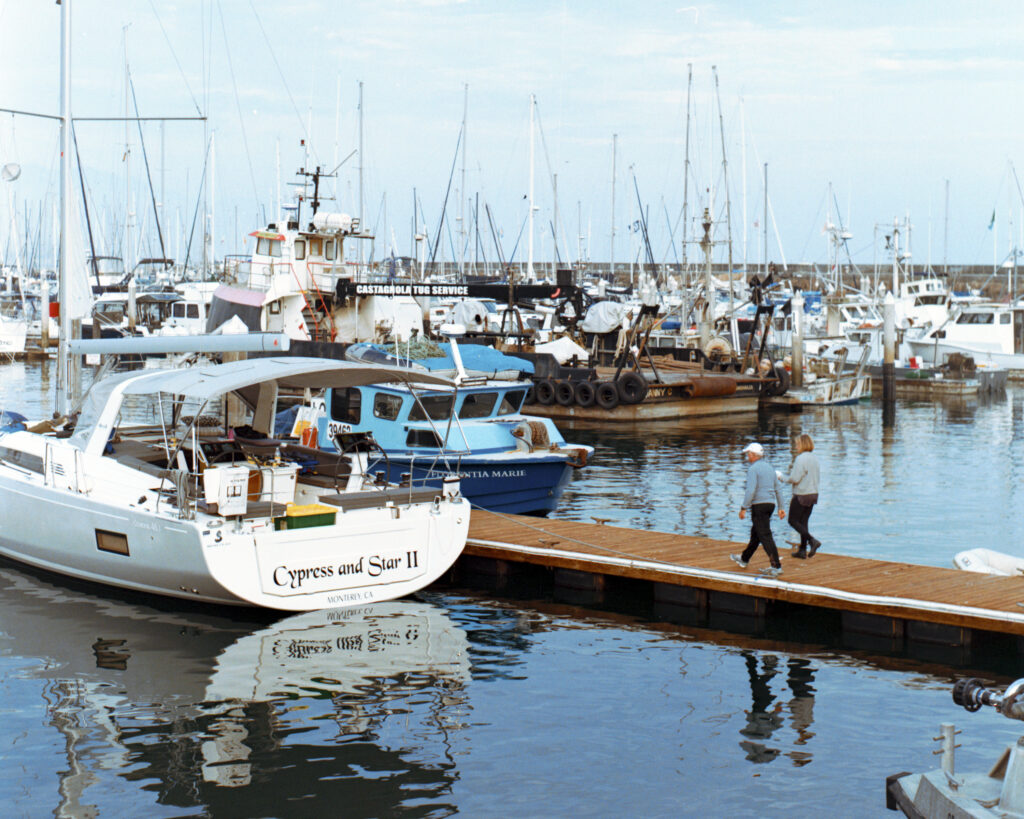
Nestled between the Pacific Ocean and the Santa Ynez Mountains less than two hours from Los Angeles, Santa Barbara is a city that blends its rich history, pleasant weather and natural beauty into its laid back community. Often referred to as the “American Riviera,” Santa Barbara’s Mediterranean climate, Spanish-style architecture, historic landmarks, local restaurants and diverse scenery make it a popular destination for tourists.
Many Santa Barbara locals are people who visited the city and never wanted to leave.
“I came here for college, and afterwards I said, ‘Well, you know, it’s a nice place. I think I’ll stick around,”’ said historian Michael Redmon, who used to work for the Santa Barbara Historical Museum. “I’m not a big city kind of person, so this is a good sized town. Because we have UCSB, we still would get entertainment, concerts, et cetera. Also, LA is not that far away if you want to go to LA for something.”
Santa Barbara’s story begins long before the Spanish arrived in California. The area was originally inhabited by the Chumash people, who inhabited the Santa Barbara coast and Channel Islands for at least 13,000 years before the arrival of the Spaniards.
The city is named after Saint Barbara, the patron saint of artillerymen and miners. The name was first used by Spanish explorer Juan Rodríguez Cabrillo in 1542 and later became official. However, it wasn’t until the early 19th century that the area began to take on the characteristics that make it so recognizable today.

In 1782, the Spanish established El Presidio de Santa Bárbara, the oldest structure in the city, which partially stands today as a state park. The Presidio served as a military outpost and played a central role in Santa Barbara’s early development.
Early tourism picked up in the 1900s, after the construction of Stern’s Wharf and the introduction of the railroad to the city, which made travel to Santa Barbara easier than the potentially treacherous stagecoach ride from Los Angeles. Over time, the city gained a reputation as a health destination, thanks in part to its pleasant weather and proximity to hot springs.
A pivotal moment in the city’s history occurred when a powerful, 6.3-magnitude earthquake leveled much of the downtown area in 1925, including the iconic Mission that had been established by Spain in the 1800s. The destruction left the city in near ruins but also sparked an effort to preserve the character of the region’s architecture.
In the wake of the disaster, Santa Barbara implemented strict building codes designed to preserve the Spanish Revival architecture that characterizes the city today. As a result, visitors and locals of Santa Barbara are treated to a picturesque setting that blends old with new. Adobe walls, red-tile roofs and central courtyards evoke the city’s historic past while meeting the demands of modern life.
“One aspect of our building style is maintaining a certain character and ambiance and cultural heritage. And the other part of it is making our city look beautiful for the people who are living in it and for the visitors coming here too,” said Emily Alessio, the director of education at the Santa Barbara Historical Museum. “I think it’s inspiring for people who aren’t from here to come and see history on display like this.”

On weekends, visitors can take part in the Santa Barbara “Art Walk” along Cabrillo Boulevard, just steps from the wharf. Local artists display their work along the scenic walk, creating an artsy atmosphere along the waterfront.
Santa Barbara’s historical preservation efforts are seen across the city, from the Santa Barbara Historical Museum, housed in a Monterey-style adobe building, to the iconic Santa Barbara Mission. The Historical Museum, which owns two adobes, showcases the city’s evolution over centuries, from the early Spanish settlers to the vibrant cultural hub it is today.
Its exhibits feature artifacts from the city’s storied past. There is a permanent exhibition of the artworks of Edward Borein, a well known artist who depicted scenes from the American West, as well as a temporary exhibition about the Old Spanish Days Fiesta,the city’s oldest and largest civic celebration, including original posters and Spanish-style costumes from the event.
The Presidio, built in 1782, remains one of Santa Barbara’s most significant historical sites. Situated a block from the Historical Museum, the Presidio is a window into the city’s Spanish colonial roots and offers visitors a glimpse into the lives of its residents. About a block south on is Casa de la Guerra, one of the oldest houses built in Santa Barbara.
Visitors can tour both the Casa de la Guerra and El Presidio de Santa Bárbara by purchasing a $5 pass.
Santa Barbara’s dedication to preserving its cultural heritage is matched by a thriving arts scene. The city is home to numerous galleries, museums and performance spaces, many of which host events throughout the year. On the first Thursday of each month, local galleries stay open late to showcase exhibits and host special events, providing a monthly opportunity for residents and visitors to experience Santa Barbara’s vibrant creative community.
To further embrace its cultural heritage, the city features many signs and placards explaining different historical landmarks. “There’s so many little Easter eggs around Santa Barbara,” said Alessio, a San Diego native. “Santa Barbara is very visual with its history. I mean, its architecture, duh… but then you get these historical placards all over town.”

Santa Barbara also hosts regular events that highlight its artistic heritage, such as the annual Summer Solstice Parade, a colorful celebration of local art and culture that takes place every June. Participants dress in elaborate costumes and parade through the streets, drawing large crowds from all around the world. Similarly, the Santa Barbara International Film Festival brings filmmakers, celebrities and cinephiles to the city each year, bringing more fun and entertainment to the city throughout the year.
Beyond its rich culture and historical landmarks, Santa Barbara is situated between rugged mountains and the Pacific Ocean, creating a diverse backdrop and pleasant weather. The city’s Mediterranean climate is one of the key reasons for its popularity as the weather rarely gets too hot or too cold, making it a good spot for year-round outdoor activities.
Tim Taylor, a seventh-generation Santa Barbaran and mortgage banker, described the city as a place with an irresistible allure. “I’ve been to some of the most beautiful places in Europe and Asia, but it’s always when you come back to Santa Barbara, and everybody says this, ‘Oh my God, what have we here,'” Taylor said. “I think the weather also is a big part of it as well. It just doesn’t get too hot or too cold, so it’s pretty much always like this. Sort of perfect.”
One of Santa Barbara’s signature attractions is its waterfront, which features several beaches for swimming, surfing and relaxing. The Santa Barbara Harbor, with its bustling docks and seaside restaurants, offers visitors a taste of coastal life, while the nearby Channel Islands National Park, accessible by boat, provides opportunities for hiking, kayaking and wildlife watching.
For those seeking a more serene experience, the Santa Barbara Botanic Garden showcases the native flora of the region, and the nearby rose garden at the Santa Barbara Mission offers a peaceful spot for picnics and reflection. The Mission itself, known as the “Queen of the Missions,” remains a focal point of Santa Barbara’s spiritual and historical identity.
Despite its relatively small size, Santa Barbara offers many activities and opportunities for both residents and visitors.



